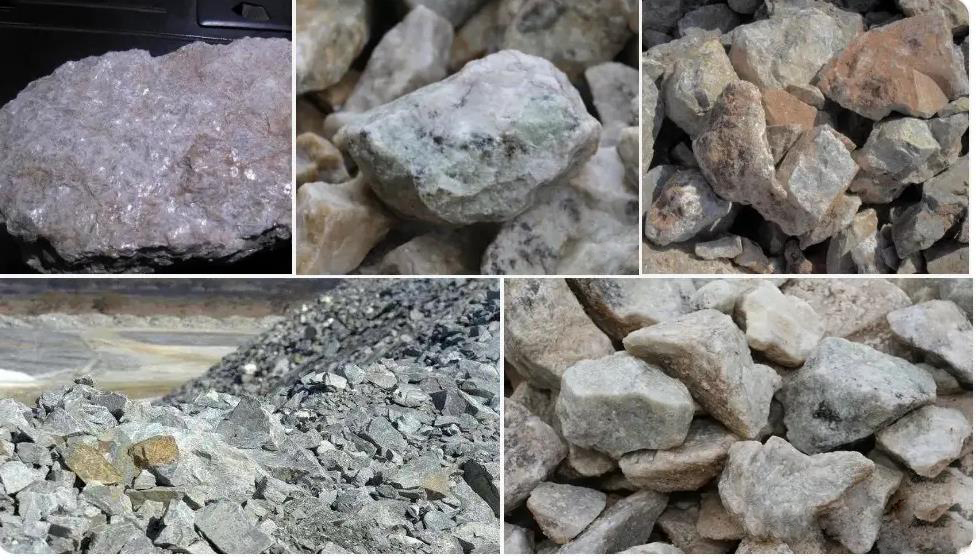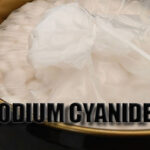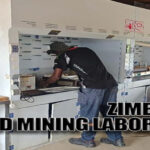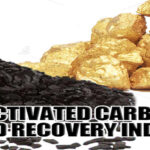
Overview of Major Lithium Minerals and Their Compositional Profiles
The global lithium resource landscape comprises over 150 known lithium minerals and lithium-bearing minerals, with 20+ occurring commonly in commercial deposits. Below is a breakdown of primary lithium minerals and their critical chemical compositions (lithium oxide and associated elements):
| Mineral | Lithium Oxide (%) | Associated Elements (%) | Economic Significance |
|---|---|---|---|
| Lithium Beryllite | 23.4–25.4 | — | High-grade lithium source, often linked to beryllium |
| Spodumene | 5.8–8.1 | Rubidium (1.51–3.80), Cesium (0.02–1.082) | Core hard-rock lithium mineral for battery supply |
| Lepidolite | 3.2–6.45 | Rubidium (0.002–0.007), Cesium (0.002–0.008) | Common in pegmatites; often processed for lithium |
| Lithium Phosphate Aluminum | 7.1–10.1 | — | Specialized phosphate lithium mineral |
| Lithium Feldspar | 2.9–4.8 | — | Used in glass/ceramics; secondary lithium source |
| Iron Lepidolite | 1.1–5.0 | Rubidium (1.22–2.05), Cesium (0.02–0.22) | Lower-grade lithium with rubidium/cesium by-values |
| Clay Lithium Ore | Variable | Typically associated with aluminum/iron clays |
Critical Considerations for Comprehensive Deposit Evaluation
Lithium deposits rarely occur in isolation. Successful mining requires integrating the evaluation of co-occurring minerals and elements to maximize economic returns and sustainability:
1. Hard-Rock Lithium Deposits (e.g., Spodumene, Lepidolite)
- Associated Elements: Niobium, tantalum, beryllium, rubidium, cesium, mica, feldspar, and fluorite are common companions.
- Opportunity: Rubidium and cesium (used in electronics and aerospace) can enhance project profitability as by-products.
- Challenge: Mica and feldspar may act as gangue minerals, requiring optimized beneficiation to separate lithium-bearing phases.
2. Salt Lake Lithium Deposits
- Associated Minerals: Sodium, potassium, magnesium, sulfate (Glauber’s salt), trona, boron, bromine, and iodine.
- Opportunity: Co-extracting potassium (fertilizers) or boron (industrial chemicals) can offset lithium production costs.
- Challenge: Complex brine chemistry requires advanced separation technologies to avoid contamination and improve lithium purity.
3. Strategic Implications for Miners
- Pre-Feasibility Priority: Conduct multi-element assays during exploration to identify all valuable components in the orebody.
- Process Integration: Design beneficiation or extraction flowsheets that capture co-values (e.g., solvent extraction for bromine in salt lakes or magnetic separation for niobium in hard-rock mines).
- Regulatory & Environmental Compliance: Ensure associated elements (e.g., fluorite, boron) are managed within local environmental standards to avoid operational delays.
Actionable Insights for Global Miners
- Diversify Revenue Streams: Treat associated minerals as strategic assets, not waste. For example, rubidium from lepidolite can command premium prices in specialty chemical markets.
- Collaborate with Process Experts: Partner with engineering firms experienced in multi-mineral processing to optimize recovery rates and reduce operational costs.
- Stay Ahead of Market Trends: Monitor demand for by-products (e.g., cesium for atomic clocks, bromine for fire retardants) to future-proof project economics.
By prioritizing comprehensive deposit evaluation, miners can unlock the full value of lithium resources while navigating the technical and economic complexities of modern mining.




